Germany Has Solved the Empty Skyscraper Problem
- Youtube Views 1,407,917 VIDEO VIEWS
Video hosted by Fred Mills. This video and article contain paid promotion for Schindler.
THE WORK from home revolution isn’t just a trend, three years in it’s still here.
While that’s causing all sorts of repercussions across every kind of industry, it does raise one very important question: what to do with all the skyscrapers full of empty offices?
The B1M's Fred Mills travelled to the heart of one of Europe’s financial capitals to try and find out. This city, like many other major centres in the world, is facing a massive challenge: it’s emptying out.
Huge commercial skyscrapers are seeing unprecedented vacancies, but one building may have just solved this problem.
That building is Omnitum Tower. Apartments and offices here are accessed through completely separate lobbies and the two never meet, despite using the exact same elevator. That might not seem like a big deal but because of this, the building is adaptable to whatever the future may bring.
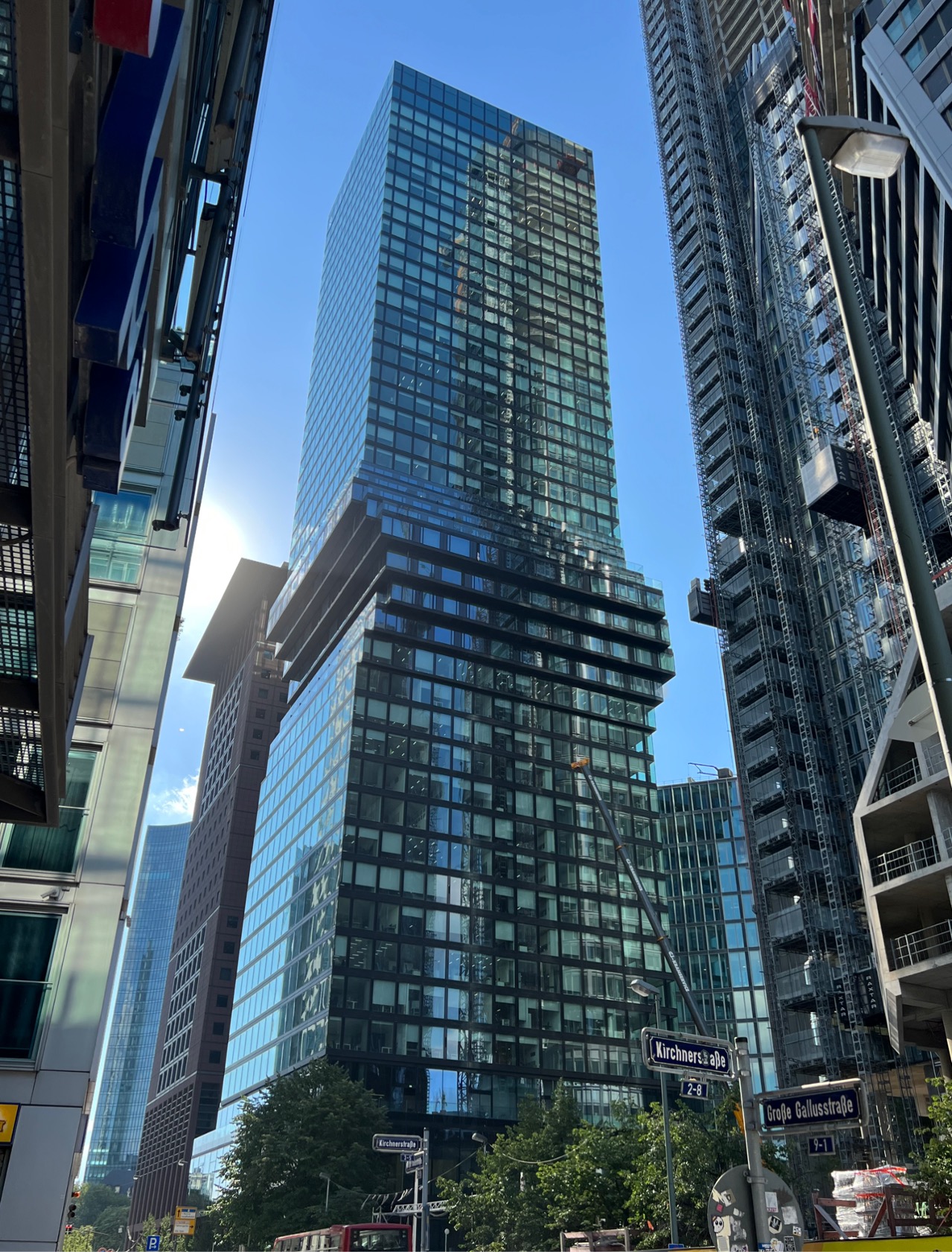
Above: Frankfurt's Omniturm Tower. Image courtesy of Fred Mills. Below: How a mixed-use skyscraper might be vertically divided. Graphic produced by The B1M.
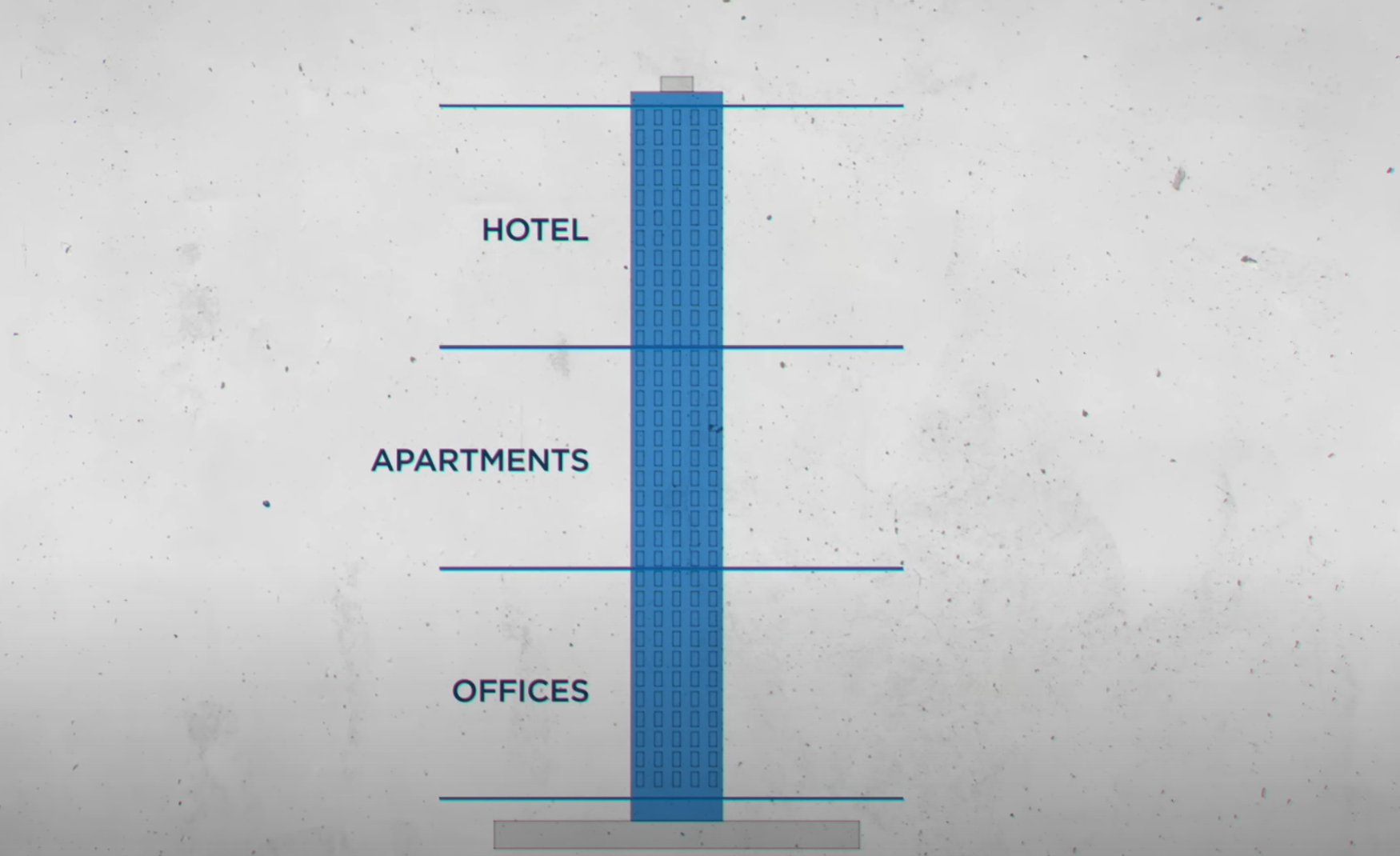
Imagine for a moment that a tall building is a bookcase. The floors and elevators are the shelves. They don’t change, but what’s on the shelves does. The books can be moved around. This shelf that houses autobiographies can become thrillers or Young Adult. Whatever the library needs it to be.
It's the same with this skyscraper. Offices can become apartments or hotels whatever is required.
Built in 2019, Omniturm Tower is the first skyscraper in Germany with real multi-use, and it could become as a blueprint not only for future skyscrapers, but for adapting the tens of thousands of skyscrapers that already exist today: extending their lifespan and saving them from wasteful and costly demolition.
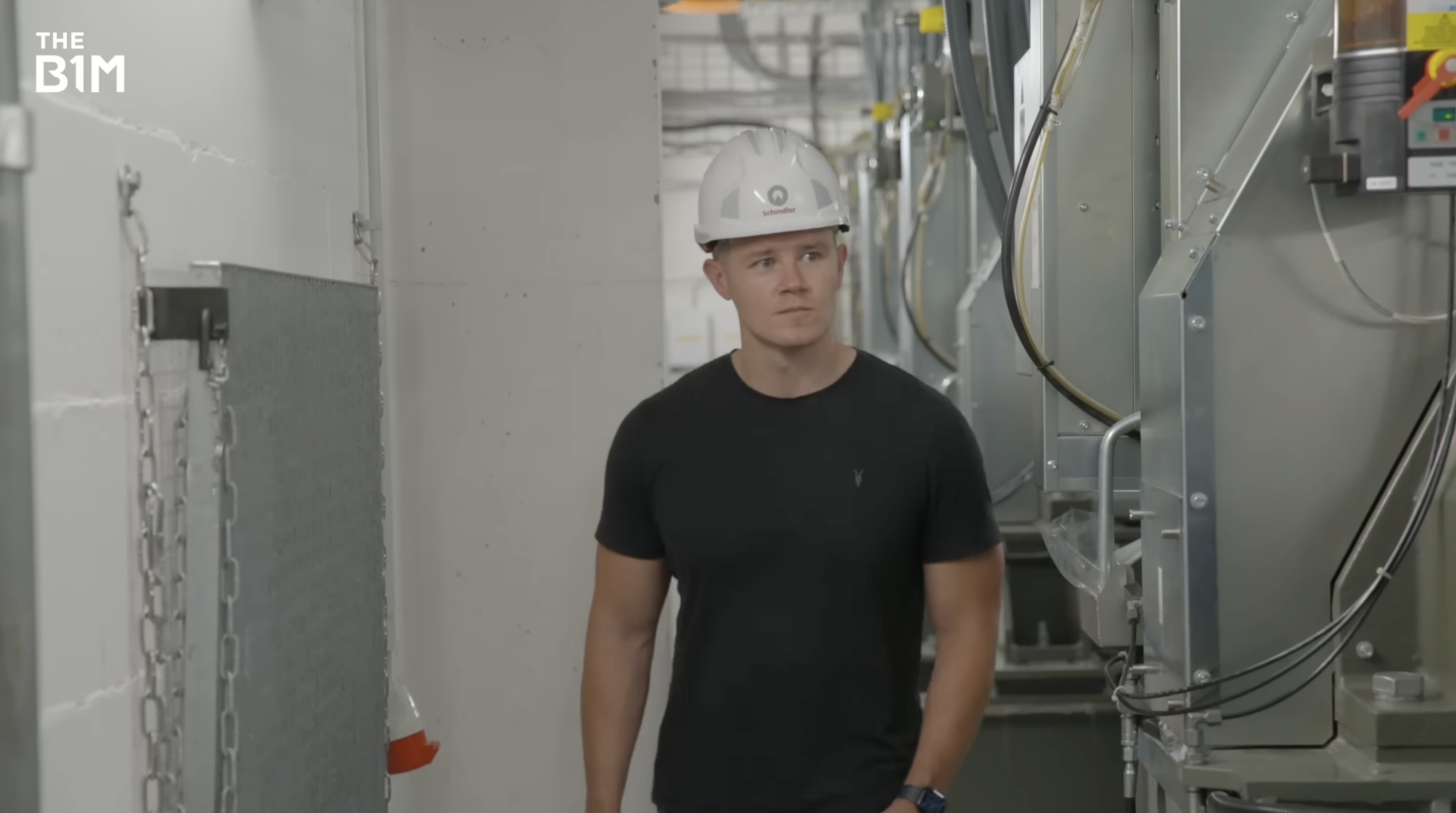
Above: The B1M's Fred Mills inside the elevator machine room at the very top of Frankfurt's Omniturm Tower.
But before we talk about how an elevator system has made that possible, let’s zoom out a bit.
Office vacancy rates vary around the world, but London’s purpose built financial district, Canary Wharf, is facing its highest office vacancy rates since 2005. It’s such a challenge that the area is having to rebrand as “Canary Wharf 2.0”; building new residential towers and focusing more on science and retail instead of purely commercial.
Meanwhile New York City is also seeing record high vacancy rates which have grown more than 70 percent since the start of the pandemic.
In fact, all across the US the office vacancy rate is nearly 20 percent.
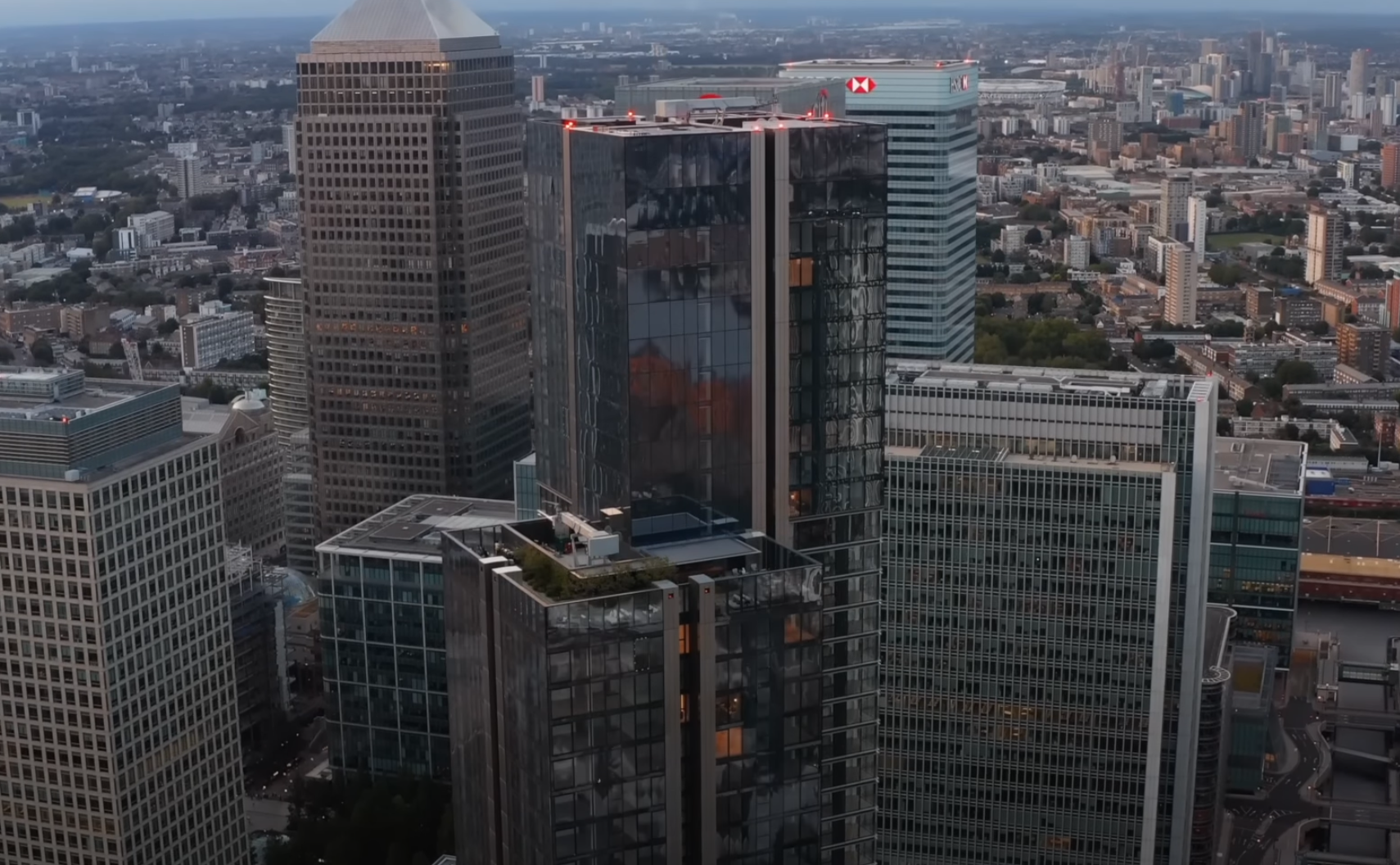
Above: London's Canary Wharf. Several cities around the world are grappling with office vacancies.
In the US, that's happening at the same time as a national housing crisis. There are too many offices and not enough homes.
Frankfurt’s US-like downtown is also facing this challenge. Companies no longer need or can support leasing enormous office space over hundreds of floors.
In order to survive, Frankfurt’s office towers are becoming mixed use. But repurposing existing space is not an easy task.
One of the many boundaries to creating a truly mixed use skyscraper is actually the elevator system. Think of it as the spine of the building, and it can take up a lot of space.
Traditionally elevators are located in the core of the building.
In a single-use skyscraper, like a traditional office building, these elevators would service every floor – and in very tall buildings, express elevators would be used.
If half of that office building were to become apartments a new elevator shaft would have to be installed to cater to just those apartments or the existing elevators would have to serve both.
This is inefficient, slows down the flow of traffic, and would make those residents of the building feel like they’re living in an office.
Even traditional mixed use buildings have this efficiency problem. If a building has multiple purposes those elevators are often restricted to just that purpose.
Say you had a skyscraper with offices on the bottom, apartments in the middle and a hotel at the top – you would most likely have three separate lobbies and three separate sets of elevators.
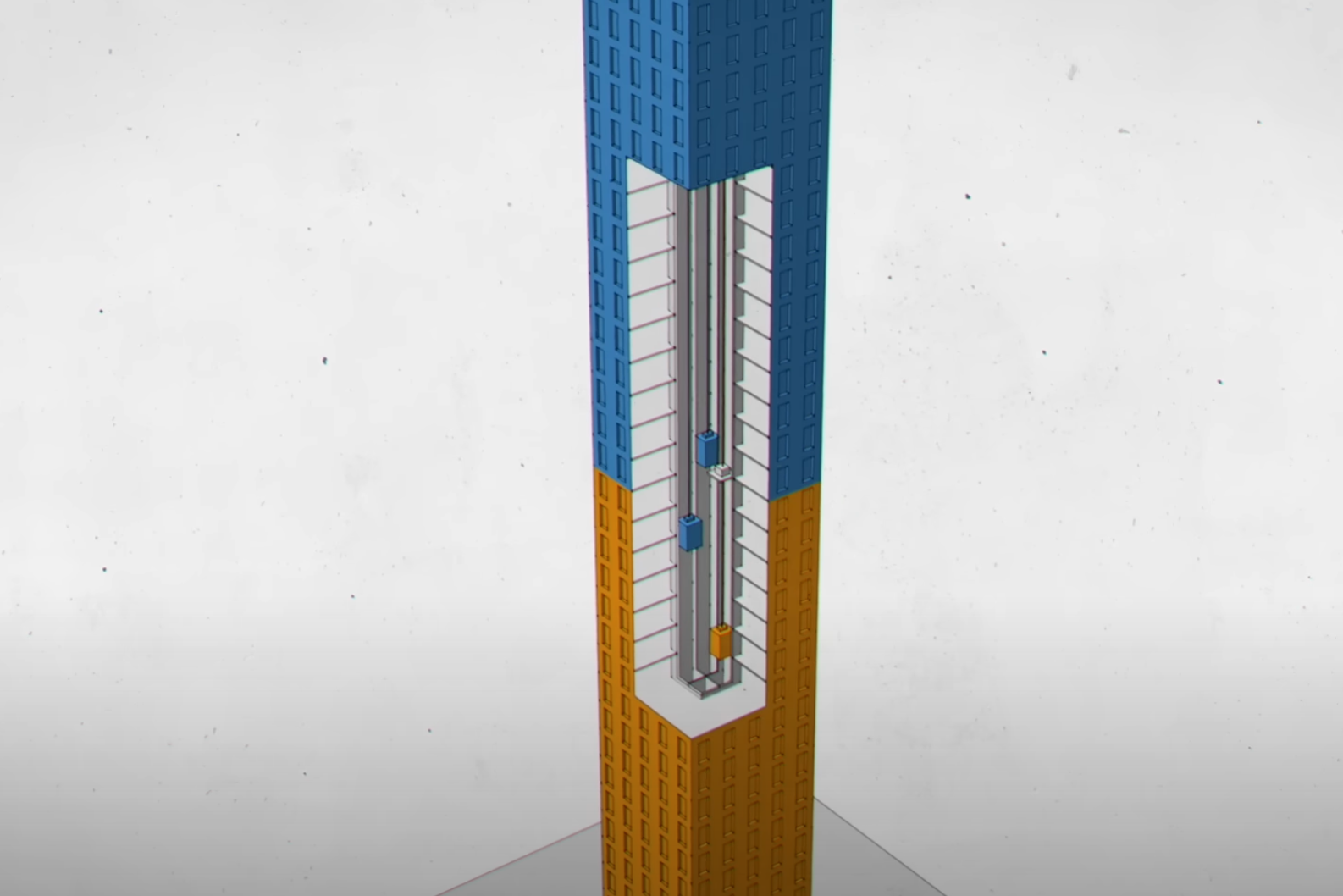
Above: The core of a typical skyscraper. Graphic produced by The B1M.
This also means the core of the building takes up an enormous amount of space with each elevator shaft that is needed.
This is all well and good for when the building first opens but it restricts its ability to adapt over time.
The elevator shafts in Omniturm are different. They’re designed as part of an approach Schindler has called “Schindler MetaCore” – it’s essentially a system that maximises efficiency from the moment someone enters the building.
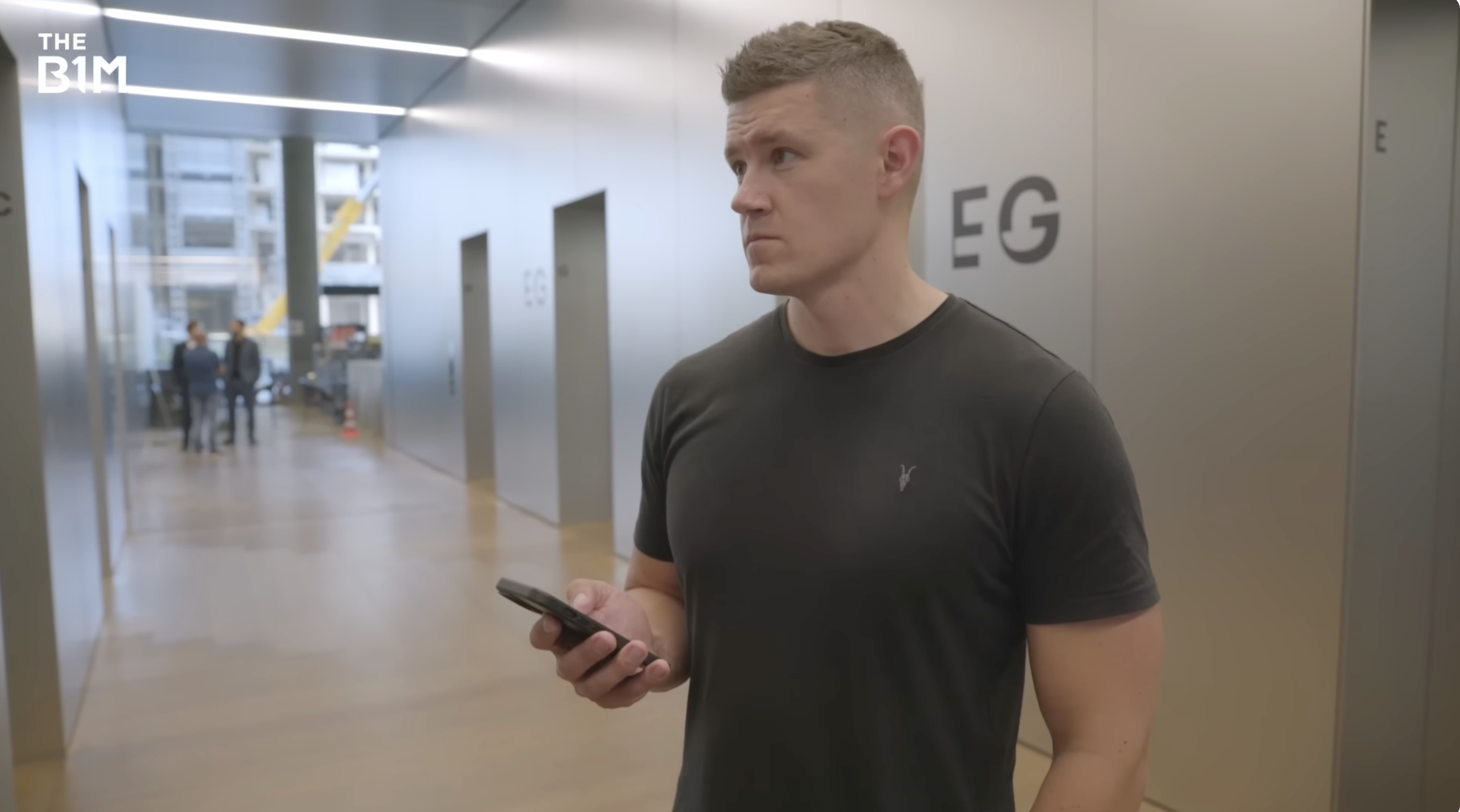
Above: The B1M's Fred Mills waiting for an elevator in the commercial office lobby of Omniturm Tower.
Omniturm Tower uses the same elevator shaft for both its offices and apartments. Using a digital network the elevator visits both lobbies and can serve every floor.
This dramatically reduces the size of the elevator shafts, freeing up the floorplate of the building to be used for other things.
This also means that the building can change, and quickly. If office vacancies continue to climb those floors could theoretically be converted to apartments and the elevator system would work seamlessly. A hotel could be added with an additional lobby.
Schindler MetaCore could also be used to adapt older skyscrapers so they can be easily repurposed, in some cases without having to rip out the existing elevator shafts but by simply adding an attachment.
The simple function of the elevators dictate what a skyscraper can become. By changing this one aspect of tall building construction we allow the future to be wide open. And in a world that’s seeing constant change that’s exactly what we need.
Our buildings should change to suit us, not us to suit them. After all, they’re going to be here a long, long time.
Learn more about Schindler MetaCore.
This video contains paid promotion for Schindler. Additional footage and images courtesy of Schindler, Omniturm and Commerz Real AG.
We welcome you sharing our content to inspire others, but please be nice and play by our rules.








